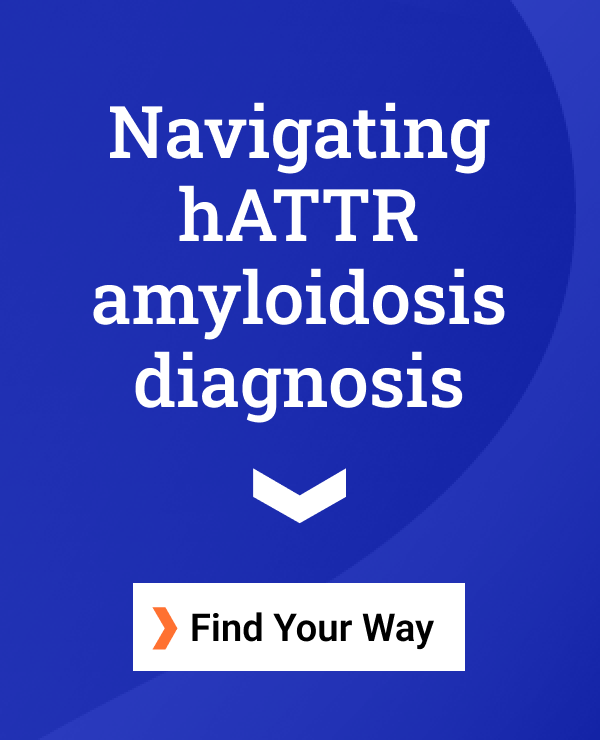Familial amyloid polyneuropathy (FAP), also known as transthyretin (TTR) amyloidosis, is a rare progressive condition caused by mutations in the TTR gene. These mutations lead to the accumulation of abnormal protein deposits (amyloids) on the peripheral nerves and other organs, leading to the symptoms of FAP.
FAP can affect multiple organs and systems in the body. The build-up of amyloid deposits in the stomach, intestine and autonomic nervous system, which regulates intestinal muscle contraction, may cause gastrointestinal issues.
Gastrointestinal symptoms such as diarrhea, vomiting, nausea, constipation, the inability to complete a meal, and unintended weight loss are common in FAP patients.
Gastroparesis, or the inability of the stomach to empty food into the intestine at a normal pace, is a common gastrointestinal complication associated with FAP.
The gastric emptying test is used to diagnose the underlying issues causing gastrointestinal symptoms. However, this test alone cannot be used to reach a final FAP diagnosis.
What is a gastric emptying test?
Most gastrointestinal symptoms such as longer retention of food in the stomach and slow digestion, indicate digestive problems.
A gastric emptying test visualizes the flow of food through the stomach into the intestine using a small amount of radioactive material included in the meal to track the food to identify the underlying digestive problems.
Preparing for the test
Usually, the test begins after breakfast, which is provided by the testing clinic or hospital. The patient must arrive with an empty stomach for the test. No food or drink should be consumed after midnight the day before the test.
Medications that affect gastric emptying, such as pain medicines and sedatives, will interfere with the test. They must be stopped at least three days before the test in consultation with a doctor. Laxatives must not be taken a day before the test.
People with diabetes taking insulin must carry their medication so they can take it after eating the test breakfast. The insulin dosage may be adjusted depending on the quantity of the meal served.
The test should not be performed during pregnancy. Women considering this this test must notify their doctors if they are pregnant.
Procedure
Both solid or liquid food can be tracked in a gastric emptying test. For babies, the radioactive material is added to the milk or baby formula (liquid study). For children and adults, it is included in the breakfast provided by the testing center (solid study).
Liquid study
Parents are advised to bring an eight-ounce feeding bottle with milk or formula to the testing center. The technologist adds a small amount of radioactive material to the feed. The baby is placed on its back, and the scanner takes pictures while the baby is being fed. It is important that the baby drinks as much as possible within seven minutes. This ensures good detection and lowers the need for repeat testing. Imaging while the baby is being fed enables the radiologist to see the liquid passing through the stomach into the small intestine.
The testing takes a little more than an hour. However, if the baby is unable to stay still, additional scans may extend the test time.
Solid study
The patient is served a meal usually containing scrambled eggs and toast at the testing center. The radioactive material is added in the scrambled eggs. It is recommended to finish as much of the meal as possible to avoid the need for repeat tests. After the meal is consumed, the patient is asked to stand facing the scanner, and an image of the stomach is taken at regular intervals. The schedule is determined by doctors and the testing center. Some take an image every 20 minutes for the first hour, followed by hourly scans. Others may scan at hourly intervals. In some instances, front and back scans may be taken.
While waiting for the next scheduled scan, the patient is free to do their own activities. The whole procedure including registration, eating, and imaging, may take four to six hours.
The scans are compiled and reviewed by the radiologist and sent to the doctor who ordered the tests.
In both tests, the amount of time the food remains in the stomach can determine if there are issues with the gastrointestinal tract. The duration and intensity of the radioactive signal along the gastrointestinal tract help track the food and how long it takes to clear the stomach.
Solids take longer to clear the stomach than liquids. If it takes about 90 minutes for half the solid food to pass into the intestine, the gastric function is considered normal. Anything more than 110 minutes indicates poor gastric function.
After the test
The test is safe and pain-free. There is no radioactive exposure from the scanner; the food is the only source of radioactivity. Very little radioactive material is used. It should clear from the body within 24 hours.
Additional information
Patients who have egg allergies must notify the testing center.
Hospitalization is not required for the test. Once the procedure is done, the patient can return home.
***
FAP News Today is strictly a news and information website about the disease. It does not provide medical advice, diagnosis, or treatment. This content is not intended to be a substitute for professional medical advice, diagnosis, or treatment. Always seek the advice of your physician or other qualified health care providers with any questions you may have regarding a medical condition. Never disregard professional medical advice or delay in seeking it because of something you have read on this website.




